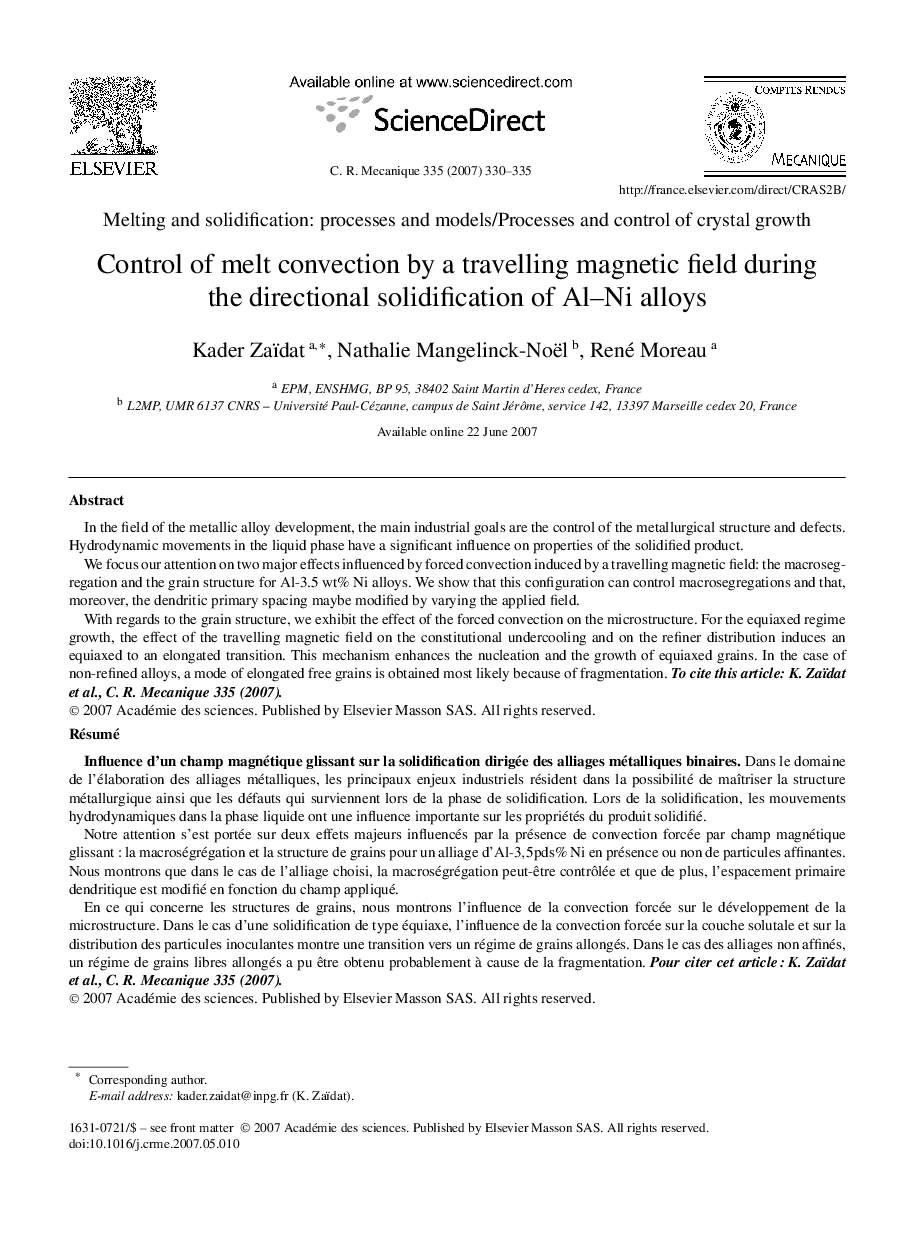| کد مقاله | کد نشریه | سال انتشار | مقاله انگلیسی | نسخه تمام متن |
|---|---|---|---|---|
| 824514 | 1469670 | 2007 | 6 صفحه PDF | دانلود رایگان |

In the field of the metallic alloy development, the main industrial goals are the control of the metallurgical structure and defects. Hydrodynamic movements in the liquid phase have a significant influence on properties of the solidified product.We focus our attention on two major effects influenced by forced convection induced by a travelling magnetic field: the macrosegregation and the grain structure for Al-3.5 wt% Ni alloys. We show that this configuration can control macrosegregations and that, moreover, the dendritic primary spacing maybe modified by varying the applied field.With regards to the grain structure, we exhibit the effect of the forced convection on the microstructure. For the equiaxed regime growth, the effect of the travelling magnetic field on the constitutional undercooling and on the refiner distribution induces an equiaxed to an elongated transition. This mechanism enhances the nucleation and the growth of equiaxed grains. In the case of non-refined alloys, a mode of elongated free grains is obtained most likely because of fragmentation. To cite this article: K. Zaïdat et al., C. R. Mecanique 335 (2007).
RésuméDans le domaine de l'élaboration des alliages métalliques, les principaux enjeux industriels résident dans la possibilité de maîtriser la structure métallurgique ainsi que les défauts qui surviennent lors de la phase de solidification. Lors de la solidification, les mouvements hydrodynamiques dans la phase liquide ont une influence importante sur les propriétés du produit solidifié.Notre attention s'est portée sur deux effets majeurs influencés par la présence de convection forcée par champ magnétique glissant : la macroségrégation et la structure de grains pour un alliage d'Al-3,5pds% Ni en présence ou non de particules affinantes. Nous montrons que dans le cas de l'alliage choisi, la macroségrégation peut-être contrôlée et que de plus, l'espacement primaire dendritique est modifié en fonction du champ appliqué.En ce qui concerne les structures de grains, nous montrons l'influence de la convection forcée sur le développement de la microstructure. Dans le cas d'une solidification de type équiaxe, l'influence de la convection forcée sur la couche solutale et sur la distribution des particules inoculantes montre une transition vers un régime de grains allongés. Dans le cas des alliages non affinés, un régime de grains libres allongés a pu être obtenu probablement à cause de la fragmentation. Pour citer cet article : K. Zaïdat et al., C. R. Mecanique 335 (2007).
Journal: Comptes Rendus Mécanique - Volume 335, Issues 5–6, May–June 2007, Pages 330-335